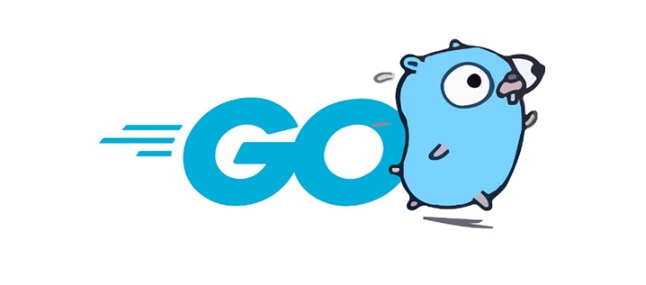Go generics are supported since 1.18 and are used to write generic code for type-safe. 1. The generic function PrintSlice[T any](s []T) can print slices of any type, such as []int or []string. 2. Through type constraint Number limits T to numeric types such as int and float, implement Sum[T Number](slice []T) T safe summation. 3. Generic structure type Box[T any] struct { Value T } can encapsulate any type value and be used with the NewBox[T any](v T) *Box[T] constructor. 4. Add Set(v T) and Get() T methods to Box[T], without repeatedly declaring [T] in the method. 5. Multi-type parameter function ContainsValue[K comparable, V any](m map[K]V, value V) bool determines whether there is a certain value in the map, and K needs to be compared. 6. Practical applications such as the general cache type Cache[K comparable, V any] struct { data map[K]V }, providing Set and Get operations to implement type-safe key-value storage. Generics improve code reusability and security through type parameters, constraints, and union types, and the syntax is concise and practical.

Generics for Go have been officially supported since Go 1.18, which allows you to write common functions and data structures that can handle multiple types. The following are several typical Go generic examples to help you quickly understand how to use generics in practice.

? 1. Generic function: PrintSlice[T any]
If you want to print any type of slice content, such as []int and []string , you can write a generic function:
func PrintSlice[T any](s []T) {
for _, v := range s {
fmt.Print(v, " ")
}
fmt.Println()
}
// Use example PrintSlice([]int{1, 2, 3}) // Output: 1 2 3
PrintSlice([]string{"a", "b"}) // Output: ab-
[T any]means that the type parameterTcan be of any type. -
anyis an alias forinterface{}, indicating no constraints.
? 2. Generic functions: with type constraints (Constraint)
If you want to restrict types, such as only numeric types are allowed, you can define constraints:

type Number interface {
int | int32 | int64 | float32 | float64
}
func Sum[T Number](slice []T) T {
var total T
for _, v := range slice {
total = v
}
Return total
}
// Use fmt.Println(Sum([]int{1, 2, 3})) // 6
fmt.Println(Sum([]float64{1.1, 2.2})) // 3.3-
Numberis an interface type, which uses|to represent union type (union), and limitTmust be one of the listed types. - This prevents you from passing
stringorstructetc. from not supporting
? 3. Generic structure
Define a common Box container that can hold any type of value:
type Box[T any] struct {
Value T
}
func NewBox[T any](v T) *Box[T] {
return &Box[T]{Value: v}
}
// Use intBox := NewBox(42)
strBox := NewBox("hello")
fmt.Println(intBox.Value) // 42
fmt.Println(strBox.Value) // hello-
Box[T]is a generic structure. -
NewBoxis a generic constructor that automatically deduces types.
? 4. Generic Methods
Add methods to generic structures:

func (b *Box[T]) Set(v T) {
b.Value = v
}
func (b *Box[T]) Get() T {
return b.Value
}
// Use box := NewBox(100)
box.Set(200)
fmt.Println(box.Get()) // 200 The method itself does not need to declare [T] because it already belongs to Box[T] type.
? 5. Generics and Map: Find key values
Write a general function to find if a value exists in the map:
func ContainsValue[K comparable, V any](m map[K]V, value V) bool {
for _, v := range m {
if v == value {
return true
}
}
return false
}
// Use m := map[string]int{"a": 1, "b": 2}
fmt.Println(ContainsValue(m, 2)) // true
fmt.Println(ContainsValue(m, 3)) // false-
K comparable: The key type must be comparable (such as string, int, struct, etc.). -
V any: The value can be of any type. - Multiple type parameters are separated by commas.
? 6. Practical application scenarios: general cache
You can implement a simple cache structure using generics:
type Cache[K comparable, V any] struct {
data map[K]V
}
func NewCache[K comparable, V any]() *Cache[K, V] {
return &Cache[K, V]{
data: make(map[K]V),
}
}
func (c *Cache[K, V]) Set(key K, value V) {
c.data[key] = value
}
func (c *Cache[K, V]) Get(key K) (V, bool) {
v, ok := c.data[key]
return v, ok
}use:
cache := NewCache[string, int]()
cache.Set("users", 100)
if val, ok := cache.Get("users"); ok {
fmt.Println("Count:", val)
}Summary: Key points of generics
- Use
[T any]or[T Constraint]to define type parameters. -
comparableis a predefined constraint for comparable types (for map key, == judgment, etc.). - Union types (
|) can restrict type collections. - Generics make functions and structures more general, type-safe, and reduce duplicate code.
Basically that's it. Go generics do not pursue complexity, but emphasize practicality and clarity. When you first use it, you will feel that the grammar is a bit new, but after writing a few examples, you will feel quite natural.
The above is the detailed content of go by example generics. For more information, please follow other related articles on the PHP Chinese website!

Hot AI Tools

Undress AI Tool
Undress images for free

Undresser.AI Undress
AI-powered app for creating realistic nude photos

AI Clothes Remover
Online AI tool for removing clothes from photos.

Clothoff.io
AI clothes remover

Video Face Swap
Swap faces in any video effortlessly with our completely free AI face swap tool!

Hot Article

Hot Tools

Notepad++7.3.1
Easy-to-use and free code editor

SublimeText3 Chinese version
Chinese version, very easy to use

Zend Studio 13.0.1
Powerful PHP integrated development environment

Dreamweaver CS6
Visual web development tools

SublimeText3 Mac version
God-level code editing software (SublimeText3)

Hot Topics
 A Developer's Guide to Maven for Java Project Management
Jul 30, 2025 am 02:41 AM
A Developer's Guide to Maven for Java Project Management
Jul 30, 2025 am 02:41 AM
Maven is a standard tool for Java project management and construction. The answer lies in the fact that it uses pom.xml to standardize project structure, dependency management, construction lifecycle automation and plug-in extensions; 1. Use pom.xml to define groupId, artifactId, version and dependencies; 2. Master core commands such as mvnclean, compile, test, package, install and deploy; 3. Use dependencyManagement and exclusions to manage dependency versions and conflicts; 4. Organize large applications through multi-module project structure and are managed uniformly by the parent POM; 5.
 Building RESTful APIs in Java with Jakarta EE
Jul 30, 2025 am 03:05 AM
Building RESTful APIs in Java with Jakarta EE
Jul 30, 2025 am 03:05 AM
SetupaMaven/GradleprojectwithJAX-RSdependencieslikeJersey;2.CreateaRESTresourceusingannotationssuchas@Pathand@GET;3.ConfiguretheapplicationviaApplicationsubclassorweb.xml;4.AddJacksonforJSONbindingbyincludingjersey-media-json-jackson;5.DeploytoaJakar
 How to use Java MessageDigest for hashing (MD5, SHA-256)?
Jul 30, 2025 am 02:58 AM
How to use Java MessageDigest for hashing (MD5, SHA-256)?
Jul 30, 2025 am 02:58 AM
To generate hash values using Java, it can be implemented through the MessageDigest class. 1. Get an instance of the specified algorithm, such as MD5 or SHA-256; 2. Call the .update() method to pass in the data to be encrypted; 3. Call the .digest() method to obtain a hash byte array; 4. Convert the byte array into a hexadecimal string for reading; for inputs such as large files, read in chunks and call .update() multiple times; it is recommended to use SHA-256 instead of MD5 or SHA-1 to ensure security.
 Developing a Blockchain Application in Java
Jul 30, 2025 am 12:43 AM
Developing a Blockchain Application in Java
Jul 30, 2025 am 12:43 AM
Understand the core components of blockchain, including blocks, hashs, chain structures, consensus mechanisms and immutability; 2. Create a Block class that contains data, timestamps, previous hash and Nonce, and implement SHA-256 hash calculation and proof of work mining; 3. Build a Blockchain class to manage block lists, initialize the Genesis block, add new blocks and verify the integrity of the chain; 4. Write the main test blockchain, add transaction data blocks in turn and output chain status; 5. Optional enhancement functions include transaction support, P2P network, digital signature, RESTAPI and data persistence; 6. You can use Java blockchain libraries such as HyperledgerFabric, Web3J or Corda for production-level opening
 python property decorator example
Jul 30, 2025 am 02:17 AM
python property decorator example
Jul 30, 2025 am 02:17 AM
@property decorator is used to convert methods into properties to implement the reading, setting and deletion control of properties. 1. Basic usage: define read-only attributes through @property, such as area calculated based on radius and accessed directly; 2. Advanced usage: use @name.setter and @name.deleter to implement attribute assignment verification and deletion operations; 3. Practical application: perform data verification in setters, such as BankAccount to ensure that the balance is not negative; 4. Naming specification: internal variables are prefixed, property method names are consistent with attributes, and unified access control is used to improve code security and maintainability.
 css dark mode toggle example
Jul 30, 2025 am 05:28 AM
css dark mode toggle example
Jul 30, 2025 am 05:28 AM
First, use JavaScript to obtain the user system preferences and locally stored theme settings, and initialize the page theme; 1. The HTML structure contains a button to trigger topic switching; 2. CSS uses: root to define bright theme variables, .dark-mode class defines dark theme variables, and applies these variables through var(); 3. JavaScript detects prefers-color-scheme and reads localStorage to determine the initial theme; 4. Switch the dark-mode class on the html element when clicking the button, and saves the current state to localStorage; 5. All color changes are accompanied by 0.3 seconds transition animation to enhance the user
 css dropdown menu example
Jul 30, 2025 am 05:36 AM
css dropdown menu example
Jul 30, 2025 am 05:36 AM
Yes, a common CSS drop-down menu can be implemented through pure HTML and CSS without JavaScript. 1. Use nested ul and li to build a menu structure; 2. Use the:hover pseudo-class to control the display and hiding of pull-down content; 3. Set position:relative for parent li, and the submenu is positioned using position:absolute; 4. The submenu defaults to display:none, which becomes display:block when hovered; 5. Multi-level pull-down can be achieved through nesting, combined with transition, and add fade-in animations, and adapted to mobile terminals with media queries. The entire solution is simple and does not require JavaScript support, which is suitable for large
 css full page layout example
Jul 30, 2025 am 05:39 AM
css full page layout example
Jul 30, 2025 am 05:39 AM
Full screen layout can be achieved using Flexbox or Grid. The core is to make the minimum height of the page the viewport height (min-height:100vh); 2. Use flex:1 or grid-template-rows:auto1frauto to make the content area occupy the remaining space; 3. Set box-sizing:border-box to ensure that the margin does not exceed the container; 4. Optimize the mobile experience with responsive media query; this solution is compatible with good structure and is suitable for login pages, dashboards and other scenarios, and finally realizes a full screen page layout with vertical centering and full viewport.






